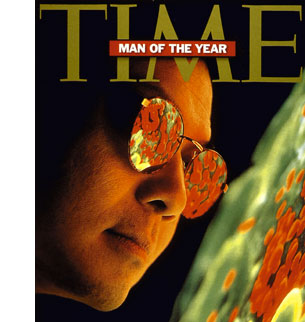
AIDS researcher Dr. David Ho is named Man of the Year by Time magazine. Recognizing the dynamic nature of HIV replication in the body, Dr. Ho and his coworkers were early proponents of combination antiretroviral therapy, including protease inhibitors.1
The FDA approves a viral load test; the first non-
nucleoside reverse transcriptase inhibitor, neviropine; an HIV urine test; and the first HIV home test kit.2
The Joint United Nations Programme on HIV/AIDS (UNAIDS) begins work to advocate for global action on the epidemic.3
CARE ACT REAUTHORIZED FOR FIVE-YEAR PERIOD
In 1996, in a major victory for the HIV/AIDS community, the Ryan White CARE Act was reauthorized through the year 2000. In an effort to address the evolving needs of people living with HIV/AIDS (PLWHA), several significant changes were made in the legislation and how it was funded.
1. In 1996, the Title IV Program, which had been part of the original CARE Act, was funded through the CARE Act appropriation for the first time.
2. The AIDS Drug Assistance Program was funded as a separate line item under Title II (Part B), reflecting a national commitment to ensure broad access to the new combination therapy known as highly active antiretroviral therapy or HAART.
3. A severity of need provision was added to the Title I (Part A) supplemental grants to eligible metropolitan areas (EMAs). This provision was intended to take into account both the resource needs of PLWHA and the cost of care delivery.
4. A modified Title II formula improved funding allocation to States with no Title I EMAs.
5. A new provision required Title I grantees to prioritize funds for women, infants, children, youth, and their families to combat perinatal transmission and increase support services.
6. New programs were added to the CARE Act and included the following:
- AIDS Dental Reimbursement Program to support dental and oral health services for HIV-positive individuals;
- Special Projects of National Significance, which funds innovative models of care for underserved populations; and
- The AIDS Education and Training Centers (AETC) Program, which provides multidisciplinary education and training for providers who treat PLWHA.

